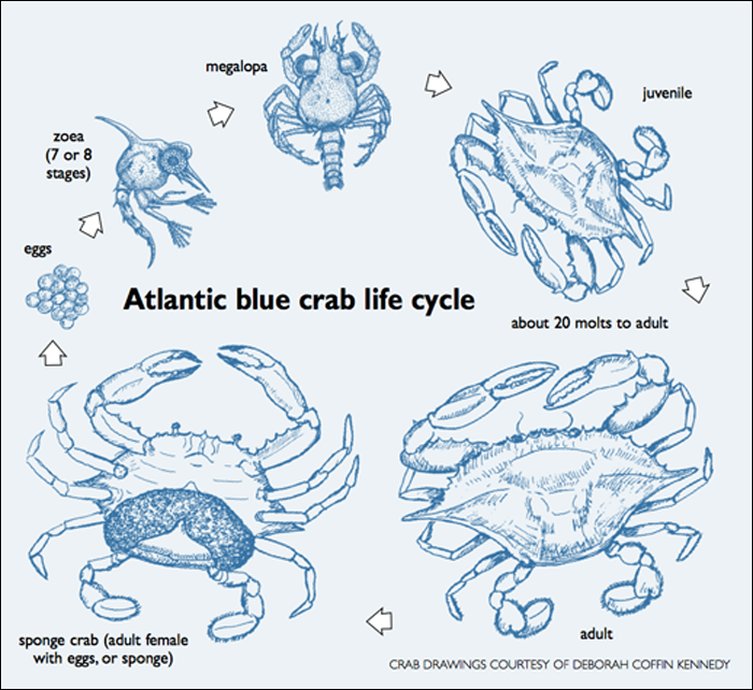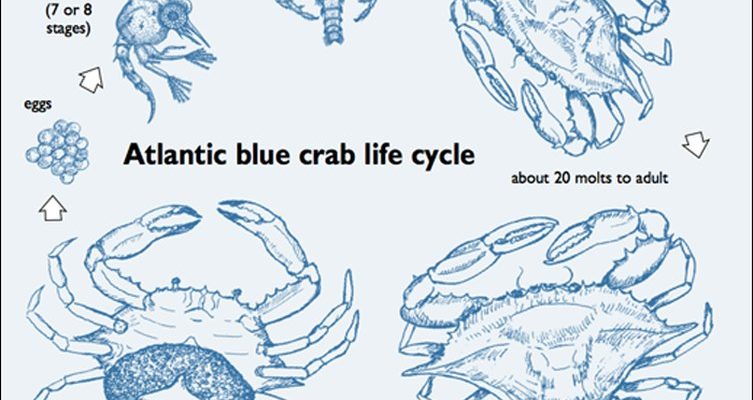
The blue crab, scientifically known as *Callinectes sapidus*, can be found in coastal and estuarine waters along the Atlantic and Gulf coasts of the United States. They’re not just local residents; their evolutionary journey spans a timeline that connects them to some of the first crustaceans that roamed the seas. So, let’s dive into this captivating tale of the blue crab’s evolution, exploring how these tenacious little critters have thrived through the ages.
The Ancestry of Blue Crabs
The story of blue crabs begins over 200 million years ago, during the Mesozoic Era. This period was much different from today; the Earth was home to the dinosaurs, and oceans were teeming with various marine life. Ancient crabs, similar to what we know today, started to emerge during this time. These early crabs belonged to different families but shared a common trait: adaptability.
You might wonder how crabs became so diverse. Well, it all comes down to their ability to adapt to various environments. As the continents drifted and ocean ecosystems evolved, crustaceans began to explore different niches. Blue crabs, for example, thrived in estuarine habitats, where freshwater mixes with saltwater. This adaptability was vital for their survival and expansion.
The Role of Natural Selection
Natural selection has played a monumental role in shaping the blue crab into what we see today. Those crabs best suited to their environments survived and reproduced, passing on their advantageous traits. You might think of it like a test—only the most resourceful crabs with the best camouflage, speed, and feeding habits made the cut.
For blue crabs, this means developing robust claws for hunting and defense, as well as a color that allows them to blend into their surroundings. From sandy bottoms to grassy estuaries, blue crabs have mastered the art of disguise, making them both effective predators and elusive prey.
Physical Characteristics and Adaptations
Let’s talk about what makes blue crabs so unique. For starters, their striking blue coloration is not just for show. It actually serves a purpose. The bright hues can attract mates and warn potential predators. But did you know their color can also change based on their environment? When they’re stressed or in murky waters, they might appear duller, blending in better with their surroundings.
Blue crabs are equipped with powerful, asymmetrical claws. One claw is larger than the other, known as the “crusher” claw, which is perfect for crushing shells of prey like clams and oysters. The smaller claw is better suited for grabbing and pinching. This clever design allows blue crabs to be versatile hunters, adapting their strategy based on the type of food available.
Life Cycle and Maturity
Now, let’s explore the blue crab’s life cycle, which is just as interesting. Female blue crabs typically reach maturity around 1-2 years old, depending on water temperature and food availability. After mating, they can carry thousands of eggs under their tails, releasing them into the open ocean where they develop through several larval stages. It’s like a tiny, aquatic journey—these larvae drift with ocean currents, transforming and growing before eventually settling into the estuarine habitats that define younger blue crabs.
The journey from egg to adult is a perilous one, with many threats lurking at every stage. Predation from fish, birds, and even other crabs means that only a fraction of those eggs will grow into mature blue crabs. But those that survive carry on the legacy of their ancestors, continuing the evolutionary journey.
Blue Crabs in Their Ecosystem
Blue crabs play a vital role in their ecosystems. As both predator and prey, they help maintain the balance of marine life. They feed on various organisms, including fish, clams, and small crustaceans, while themselves serving as a key food source for larger predators like seals and larger fish.
Healthy populations of blue crabs contribute to the overall health of the ocean. They help control the populations of their prey, which can prevent overpopulation and help maintain biodiversity. So, when you think about blue crabs, remember that they’re not just a seasonal delicacy; they’re a crucial piece of the marine puzzle.
Impact of Human Activities
Unfortunately, blue crabs face many challenges due to human activities. Overfishing, pollution, and habitat destruction have all taken a toll on their populations. Coastal development and climate change are particularly concerning, altering the ecosystems where blue crabs thrive. The delicate balance that has existed for millions of years is now disrupted.
Conservation efforts are underway to preserve blue crab habitats and manage fishing practices to ensure these creatures continue to thrive. It’s vital for us to recognize the importance of protecting their environment. After all, the health of blue crabs often mirrors the health of the entire estuarine ecosystem.
The Future of Blue Crabs
Looking to the future, the blue crab’s journey is far from over. With ongoing research and conservation efforts, scientists are striving to understand better how to protect these incredible creatures. As they continue to adapt to changing environments, their evolutionary story will keep unfolding.
Restoring natural habitats, improving water quality, and implementing sustainable fishing practices are essential steps we can take to safeguard the future of blue crabs and the ecosystems they inhabit. We have the power to be their allies in this journey.
A Lasting Legacy
The evolutionary journey of the blue crab is a testament to resilience and adaptation. From their beginnings millions of years ago to their current role in our coastal ecosystems, these hardy creatures remind us of nature’s incredible power to thrive despite challenges. Each blue crab you see is not just a shell on the beach; it’s a living connection to our planet’s past and a vital part of its future.
As we enjoy the beauty of these crabs and perhaps even savor them at a summer feast, let’s remember to respect and protect their habitats. Their journey is a shared one—one that connects us all. So next time you spot a blue crab, take a moment to appreciate the long, winding path it has traveled through time and the important role it plays in our world.

